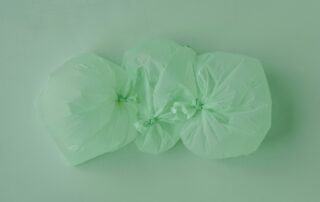We are driven by design to help eliminate waste, circulate materials, and regenerate nature.




















Who We Are
Who We Are
Circular Design Co is a multidisciplinary studio accelerating the transition to a circular economy through the effective use of innovative, sustainable materials.
We educate and advise designers, makers, builders, investors and networks to connect supply chain gaps and create regenerative social value.
Our Why
Our Why
In the past 10 years, $3 billion has been invested into the next generation of sustainable materials with more than $455 million of that raised in 2022 alone (source: Material Innovation Initiative). However, innovators face very real barriers on the path to commercialization, often having to change the product design for the material, or the material not being adaptive to the production process.
Additionally challenging is the inherent paradox of “scaling sustainability”. Our work is to decouple economic activity from the consumption of finite resources, build long-term resilience, generate economic opportunities, and provide environmental and social benefit.
Our How
Our How
Our team is an international network of collaborators organized around 3 core functions:
1) Maintaining a Circular Material Library to build our pre-verified partner base and stay up-to-date on the industry.
2) Consulting material makers and product producers on circularity and scale, with the unique ability to offer a global perspective.
3) Collaborating with material partners on our own range of products to continually grow and hone our skills.
Together we explore materials, advise processes, and co-create concepts that move forward the circular economy.
Latest Content
Latest
Follow Us
Follow Us







![Cyalith by @deakinbio is a bio-based, low-carbon alternative to decorative and conventional ceramic tiles.
The constituent biopolymer of Cyalith is obtained from photosynthetic [micro]algae - the slime that grows on ponds. The production process incorporates the same steps as traditional ceramic tiles, except without the need for high-energy firing and some other energy-intensive processes.
Cyalith has a bioinspired structure similar to sea shells, comprised of about 95% (by mass) naturally occurring calcium carbonate and a biopolymer binder. Bio-based resin is also applied as a coating to seal and protect the tiles. The biopolymer is currently extracted from microalgae, but the company expects to source its ingredients as a waste product from 3rd generation biofuels production or other algae-based biomanufacturing as well.
.
.
.
.
#circularmateriallibrary #circularmaterials #circulardesign #biocycle #circulardesigner #circulardesigners #circulardesignguide #circulardesignstrategies #circulardesignthinking #circulareconomy #circulareconomyclothes #circulareconomydesign #circulareconomyplastic #closedloop #closedloopsystem #systemsthinking #circulardesignco #sustainablematerials #newmaterials #materialrevolution #materialinnovation #4thindustrialrevolution #biomaterials #biofabricated #biobased #biodesign #biofabricate](https://scontent-ord5-1.cdninstagram.com/v/t51.29350-15/433133724_3267516726889653_8346310973875502362_n.heic?stp=dst-jpg&_nc_cat=111&ccb=1-7&_nc_sid=18de74&_nc_ohc=i7lEc3j8oKgAb4Pjjyi&_nc_ht=scontent-ord5-1.cdninstagram.com&edm=ANo9K5cEAAAA&oh=00_AfB66O3lBCx6s0lQnuAd7Q8aN4XtryjkEtxholgCQZB6vg&oe=662DBB45)

